California's little-known ancient society
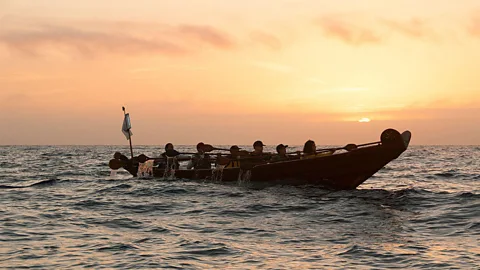 Alamy
AlamyTracing their ancestral home to the picture-perfect Channel Islands, the Chumash likely descend from some of the Americas' earliest settlers.
When I was in elementary school, my class read a book called Island of the Blue Dolphins about a young Indigenous girl who was stranded on an island off the coast of California. The novel is based on the true story of the "Lone Woman of San Nicolas", who supposedly lived alone on San Nicolas Island for 18 years during the mid-19th Century, after the rest of her native American tribe was relocated to the mainland by missionaries.
My school was in the Santa Ynez Valley, located about 30 miles from where the "Lone Woman" (later baptised as "Juana María" at the Old Mission Santa Barbara) was brought ashore in 1853 and died just seven weeks later. From that Mission, you can gaze out at the eight-isle archipelago known as the Channel Islands – the furthest being San Nicolas, where Juana María lived. Decades later, that book has stayed with me, but as with many stories, I've come to realise that things are not always what they seem.
Many people are surprised to hear that there even is a cluster of islands off the coast of California. The most-visited island, Catalina, contains the historic port town of Avalon, which was a haven for movie stars in Hollywood's golden era. Another five islands make up the Channel Islands National Park, which was established in 1980 alongside the Channel Islands National Marine Sanctuary to protect the islands' environmental diversity and the surrounding ocean.
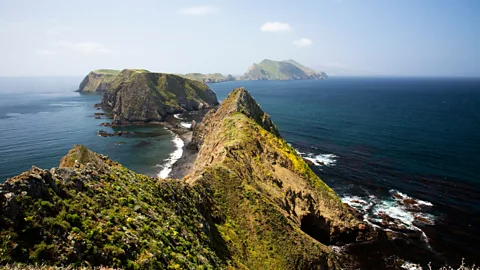 Alamy
AlamyOften called "the Galapagos Islands of North America", the Channel Islands contain 145 endemic plant and animal species that exist nowhere else, including a Torrey pine grove (one of only two on Earth), as well as island deer mice, spotted skunk, island scrub jays and the Channel Island dwarf fox. The islands are also a Unesco Biosphere Reserve since they represent "one of the last examples of natural Mediterranean ecosystems in North America" with characteristically wet, mild winters and dry, warm summer seasons.
Yet, environment and Hollywood history aside, perhaps the most fascinating aspect of these far-flung islands is their distant past. In 1959, archaeologist Phil Orr discovered human remains on Santa Rosa island in the national park. Nearly 40 years later, his successor Dr John R Johnson used radiocarbon dating to determine that these skeletal remains date back some 13,000 years, making them one of the oldest-known human remains found in North America.
Visiting the Channel Islands
Island Packers ferries offer a variety of trips from Ventura harbour to Santa Rosa, Santa Cruz, Anacapa and San Miguel islands, and weekly trips from Oxnard harbour to Anacapa Island. In addition to accommodation on Catalina (the only island with hotel options), camping is also permitted year-round on all five islands in the park.
The discovery of this so-called "Arlington Man" begged many questions: who was this ancient person, how did he get onto the island and what happened to his descendants? The answer likely points back to the Chumash people, an Indigenous group whose territory once spanned some 7,000 square miles along the California coast and the northern Channel Islands. The radiocarbon dating of Arlington Man not only supported a theory that the Channel Islands were a stopping ground during the earliest migration from north-east Asia to the Americas, it also rekindled a poignant debate among the roughly 10,000 Chumash people living along the California coast today about reclaiming their history and honouring their heritage.
For years, Arlington Man's remains were held at the Santa Barbara Museum of Natural History (SBMNH). But in April 2022, following a request by the Chumash under the Native American Graves Protection and Repatriation Act (NAGPRA), which aims to return Native American items of cultural and historical importance to their descendants, his remains were repatriated to the Santa Ynez Band of Chumash Indians.
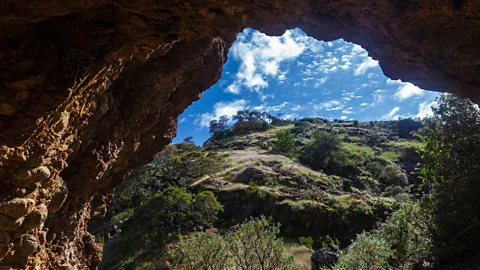 Alamy
Alamy"Those are our first people. The first people came to the islands, then came to the mainland. That's where we came from. That begins the story of the Chumash people, for all of the tribes," says Nakia Zavalla, the cultural director for the Santa Ynez Band of Chumash Indians. "Unfortunately, when you talk about… the scientists' perspectives, it puts a timeline on it. But our stories are from time immemorial," she adds.
Zavalla believes that repatriating these ancient Indigenous remains is an important first step towards righting the wrongs of the past. "Today as a modern Chumash woman, let's talk about protection, responsibility, human rights and ethics. After colonisation and the fur trade, the history of the land has to speak to that disrespect and the atrocities… with the archaeology mindset, permission needs to be given. We need to follow better protocol on permission and respect."
Eleanor Fishburn is the chair of the Barbareno Band of Chumash Indians and a tribal member of the Ventureño Band of Mission Indians. Her ancestors lived on the Channel Islands and she can still view the islands from the window of her Ventura home. She says that first and foremost, it is important to clarify something about the Chumash people and the Channel Islands.
"The islanders were called Michumash people, the 'makers of the shell bead money'. So when the mission system came [in the late 1700s], the Indians were sent to the different missions, and that's how we ended up getting the [tribes of] Samala (Santa Ynez) and Canalino (Santa Barbara), Mitskanaka (Ventura) and yak titʸu titʸu yak tiłhini or ‘ytt’ (San Luis Obispo). Everybody wants to lump us all together, but we are not together. We are our own separate tribes," she explains.
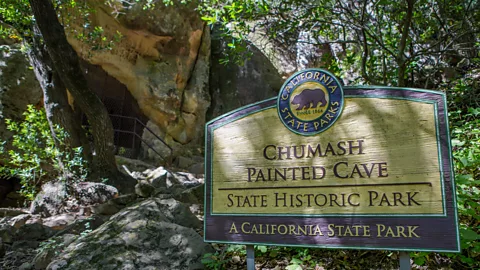 Alamy
AlamyAs a former staff member at the SBMNH who is currently studying anthropology and archaeology, Fishburn has a unique perspective on these issues.
How to learn more about Chumash culture
• Visit Chumash Painted Cave State Historic Park near Santa Barbara, which preserves Chumash rock art from the 1600s.
• Attend the annual Santa Barbara Channel crossing from the mainland to Santa Cruz Island's Scorpion Beach each September, which features replica canoes constructed and paddled by Chumash community members.
• Apply to be a part of the Channel Islands Naturalist Corp, a volunteer-run team of trained naturalists who educate the public about the islands' rich environmental diversity and cultural heritage.
• Visit the Chumash Indian Museum in Thousand Oaks and the soon-to-open Santa Ynez Chumash Museum and Cultural Center.
"In the early 1900s, there was a big rush for anthropologists to interview us California Indians who were left," she explains. "With that came a lot of urgency to put shovels in the ground and to excavate and find artefacts and culturally sensitive items that our ancestors were buried with. That was not done in a very ethical, sensitive, honorary way. All these collections that were put on the shelf of repositories were not actually studied. Did they know what they were digging for? What were their motives? They never studied it, they just kept digging and digging."
"Now with the new [NAGPRA] laws, things have changed. So, with everything being put back to the ground, we Indigenous folks who have been studying anthropology and our culture haven't had an opportunity to go through that paperwork, go through those collections and give it our perspective… I want to be able to look at those collections, see it through our eyes, look at those papers that they made money off of and share our voice."
More than 60 years after Island of the Blue Dolphins was published, a lot of lore surrounds the Lone Woman of San Nicolas. Some people believe that she actually didn't live alone on the island and only let herself be "rescued" after her son died. Fishburn doesn't buy that. "The story behind Island of the Blue Dolphins is something I believe docents put together. That's not all that happened to that lady out there. To me, that's fantasy," she says.
But despite objections to the islands' dramatised past, most Chumash people agree that the Channel Islands are a very special place worthy of protection for future generations.
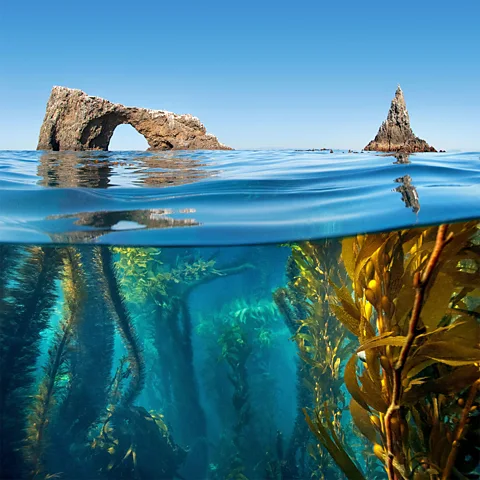 Alamy
AlamyIn 2023, the Northern Chumash Tribal Council proposed expanding the current marine sanctuary to create a larger conservation zone. The hope is to further protect the countless sacred Chumash sites, oceanic environment and wildlife migratory corridor, and to limit offshore oil drilling, which has long been a contentious issue along the Santa Barbara and Ventura coastline.
Shauna Fry, the outreach coordinator for the Channel Islands National Marine Sanctuary, has been integral in the islands' educational and conservation efforts. Back in 1996, Fry piloted a programme that is today called the Channel Islands Naturalist Corps (CINC), a volunteer-run team of trained naturalists who educate the public about the islands' rich environmental diversity and cultural heritage. The programme supports the mission of both the Channel Islands National Park system and CHNMS, as well as promoting citizen science efforts to support whale conservation.
"There are so many pieces to protect," Fry says. "The islands feel so far away but you're not that far from the mainland, and from one of the largest cities of Los Angeles. The people that work and support the islands all have that shared interest. It was also recently designated as a whale heritage site, which adds another layer of education and conservation for the islands."
She adds: "These are Chumash lands and it feels important that we educate the public about that. The Chumash live today, they are part of society and are still alive and well today. They are not the past, they are here now, a culture that's thriving, and they are sharing the cultural traditions with the younger generations."
--
If you liked this story, sign up for The Essential List newsletter– a handpicked selection of features, videos and can't-miss news, delivered to your inbox twice a week.
